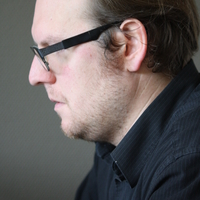Bert Gevaert
Vrije Universiteit Brussel, Department Of Languages, Faculty Member
- Latin Literature, Roman History, Roman Historiography, Disability Studies, History of European Martial Arts, M. Valerius Martialis, and 52 moreGreek and Latin Epigram, History of mentality (Classics), Humour Studies, Palaeopathology, History, Art History, English Literature, Popular Culture, Military History, American History, Victorian Literature, Autism, Historical Fencing, Medieval Military History, Historical European Martial Arts, Medieval History, Arms and Armor Studies, Arms and Armour, Medieval Europe, Combat PTSD, Teaching of Foreign Languages, Medieval Warfare, Early Modern History, Fencing, Court Culture, History of Fencing, Ancient Weapons and Warfare, Ancient Warfare, Ancient and medieval arms and armour, Late medieval and early modern military history, Duelling, Game of Thrones, Martial Arts, Manuscripts (Medieval Studies), War and violence, Martial Arts (Anthropology), Research in Martial arts, War Studies, Chivalry (Medieval Studies), Renaissance, Medieval Studies, Intellectual History of the Renaissance, Swordsmanship, Manuscript Studies, Italian Renaissance Art, Late Middle Ages, Renaissance History, Late Medieval English History, Medieval Germany, Archaeology of Crete, Knighthood, and Middle Agesedit
Research Interests:
Research Interests:
Though Napoleonic warfare is usually associated with guns and cannons, edged weapons still played an important role on the battlefield. Swords and sabers could dominate battles and this was certainly the case in the hands of experienced... more
Though Napoleonic warfare is usually associated with guns and cannons, edged weapons still played an important role on the battlefield. Swords and sabers could dominate battles and this was certainly the case in the hands of experienced cavalrymen. In contrast to gunshot wounds, wounds caused by the saber could be treated quite easily and caused fewer casualties. In 18th and 19th century France, not only manuals about the use of foil and epee were published, but also some important works on the military saber: de Saint Martin, Alexandre Muller… The saber was not only used in individual fights against the enemy, but also as a duelling weapon in the French army.
Research Interests:
Studies of ancient disability, and especially of the Roman world, have often focused on 'monstrous' or extremely deformed bodies in both the mortal and divine communities. This case study highlights the concept of strange or... more
Studies of ancient disability, and especially of the Roman world, have often focused on 'monstrous' or extremely deformed bodies in both the mortal and divine communities. This case study highlights the concept of strange or miraculous creatures and monsters in the natural history of Gaius Plinius Secundus, better known as Pliny the Elder. From the beginning people have considered monsters to be tremendum et fascinans , fascinating mankind but also frightening. A Roman aristocrat, army officer and encyclopaedist had marked interest in the wonders of nature. In his encyclopaedia, he encounters a variety of mirabilia , ranging from the special powers of precious stones, trees and plants to all sorts of strange creatures and exotic human beings. He fully acknowledges the possibility of the existence of monsters. There is just one single passage in which Pliny suggests that the idea of 'monster' has developed over time. Keywords:bodily disability; Gaius Plinius Secundus; monster; Pliny the Elder; tremendum et fascinans
Research Interests:
Duelling and Napoleonic history go together like a horse and carriage. Though strictly forbidden and disliked by Napoleon, duelling was a very frequent phenomenon in the Grande Armée. It is even possible to speak about a ‘duellomanie’,... more
Duelling and Napoleonic history go together like a horse and carriage. Though strictly forbidden and disliked by Napoleon, duelling was a very frequent phenomenon in the Grande Armée. It is even possible to speak about a ‘duellomanie’, which caused many (deadly) victims. Nevertheless, for various reasons soldiers crossed blades and duels went according to certain unwritten rules. After an official invitation to go to a certain place at a certain time, a duel, fought with specific weapons, took place under the watchful eye of seconds. Sometimes these duellists wanted to kill their opponent, but in many duels the only intention was to cause a (light) wound. Although duels were honourable and a symbol of masculinity and bravery, they also caused many soldiers to die, not for their country, but in a fight without purpose.
